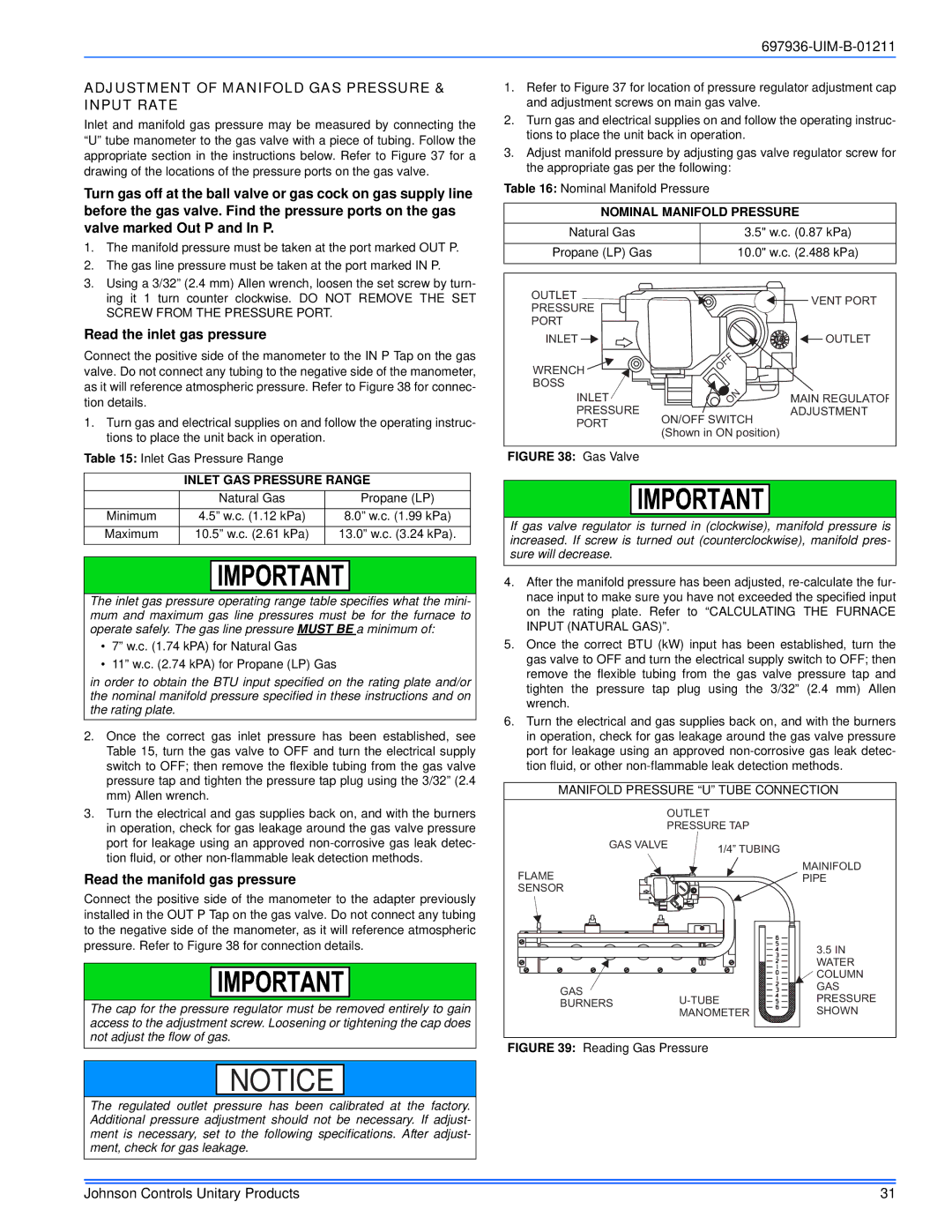TM9X*MP specifications
The Johnson Controls TM9X*MP series represents a significant advancement in the realm of HVAC control systems, positioning itself as a versatile solution for both commercial and residential applications. Renowned for its intelligent design and user-friendly interface, the TM9X*MP series aims to enhance energy efficiency and provide comfort to its users.One of the standout features of the TM9X*MP series is its advanced communication capabilities. It employs the latest communication protocols, including BACnet and Modbus, which facilitate seamless integration with various building management systems. This connectivity ensures that users can monitor and control their HVAC systems remotely, providing unparalleled convenience and control over their environment.
Further enhancing its adaptability, the TM9X*MP series supports a wide range of HVAC equipment, including heat pumps, rooftop units, and variable air volume systems. This flexibility makes it an ideal choice for diverse applications, catering to the specific needs of different building types and operational requirements.
Energy efficiency is a significant focus of the TM9X*MP series. The system is equipped with advanced algorithms that optimize HVAC performance based on real-time data inputs. By utilizing trends in occupancy and weather forecasts, the TM9X*MP can make informed adjustments to operation schedules and settings, ensuring minimal energy wastage while maintaining optimal comfort levels.
Another notable characteristic of the TM9X*MP series is its intuitive touchscreen interface. This user-centric design makes it easy for operators to navigate through various settings and configurations, reducing the complexity often associated with HVAC controls. The interface can display vital system information, including energy consumption metrics and system diagnostics, empowering users to make informed decisions regarding their HVAC systems.
The TM9X*MP series also prioritizes robustness and reliability. Built with high-quality components, these controllers are designed to withstand varying environmental conditions, ensuring extensive operational longevity. Furthermore, the comprehensive support and resources provided by Johnson Controls augment the TM9X*MP series’ reputation for exceptional service and performance.
In conclusion, the Johnson Controls TM9X*MP series is a versatile and reliable solution for modern HVAC control needs. Its advanced communication capabilities, energy-efficient algorithms, user-friendly interface, and robust design make it a strong contender in the market, catering to the dynamic demands of contemporary heating and cooling applications. Whether for large commercial buildings or smaller residential units, the TM9X*MP series stands out as a top-tier choice for HVAC management.

